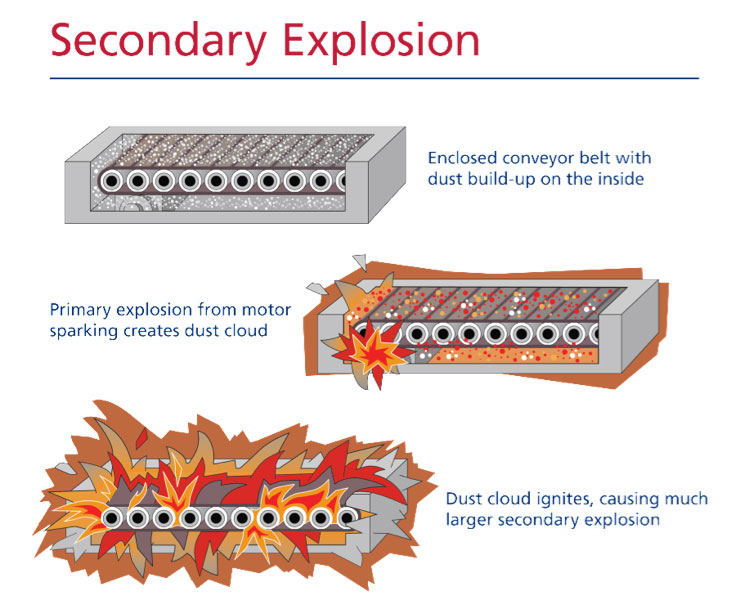Preventing the Five Major Causes of Industrial Fires and Explosions
From our friends at: Occupational Health and Safety
Preventing the Five Major Causes of Industrial Fires and Explosions
By: Stephen Watkins, Applications Engineer
Industrial fires and explosions cost companies and governments billions of dollars every year, not to mention the loss of life, which can’t be described in monetary terms. According to the most recent fire statistics from the National Fire Protection Association (NFPA), an average of 37,000 fires occur at industrial and manufacturing properties every year. These incidents result in 18 civilian deaths, 279 civilian injuries, and $1 billion in direct property damage.1
These disasters happen for many reasons, often because managers and employees aren’t aware of the risks that surround them at work every day. When dealing with the risk of fires and explosions, it’s important to understand the most common causes.
Combustible Dust
Often overlooked, and highly deadly, combustible dust is a major cause of fire in food manufacturing, woodworking, chemical manufacturing, metalworking, pharmaceuticals, and just about every other industry you can name. The reason is that just about everything, including food, dyes, chemicals, and metals – even materials that aren’t fire risks in larger pieces – have the potential to be combustible in dust form.
And these explosions aren’t easy to contain. In a typical incident, combustible material comes into contact with an ignition source causing a small fire. These small fires go unreported, but they don’t come without consequences. Even small fires in industrial facilities cause loss of product, time and sometimes bodily injury.
The outcome can also be much worse. If there’s dust in the area, the primary explosion will cause that dust to become airborne. Then, the dust cloud itself can ignite, causing a secondary explosion that can be many times the size and severity of the primary explosion. If enough dust has accumulated, these secondary explosions have the potential to bring down entire facilities, causing immense damage and fatalities. Most people recall the Imperial Sugar explosion as an example of a devastating loss due to combustible dust accumulation.
The key ingredient in combustible dust fires and explosions is the presence of dust itself. While dust cannot be eliminated entirely, you can make sure it doesn’t accumulate to a dangerous level simply by following a regular housekeeping regimen.
Take the steps to safely collect combustible dust in any environment:
1. Understand your facility and your responsibilities
It is ultimately your and your company’s responsibility to select safe equipment. You can be held accountable by multiple authorities having jurisdiction (AHJ), including your insurance company, local officials and OSHA.
2. Get to know the regulations, standards and recommendations
Stay up-to-date on the current state of regulations, standards and recommendations so you make informed decisions.
3. Select the safest industrial vacuum for your application
Select equipment that will help you become safe and stay safe, meeting all requirements set forth by your facility, AHJ, insurance company, NFPA, OSHA and, most importantly, your users.
Hot Work
Although hot work is commonly equated with welding and torch cutting, there are many other activities – including brazing, burning, heating, and soldering – that pose fire hazard. This is because sparks and molten material, which reach temperatures greater than 1000⁰F, can easily travel more than 35 feet.2
In 2014, a pier fire in California caused by a welder’s torch resulted in more than $100 million in damage when it caused a partial collapse of a warehouse floor.3 In 2012, three workers performing hot work died disassembling a metal crude oil tank. The sparks from the work ignited vapors inside the tank, causing a fire that then spread to nearby woods.4

Comments
Post a Comment